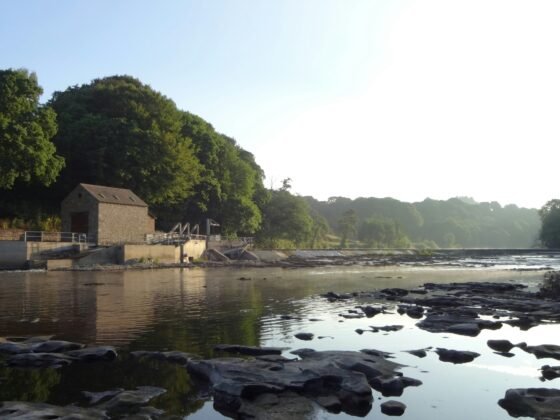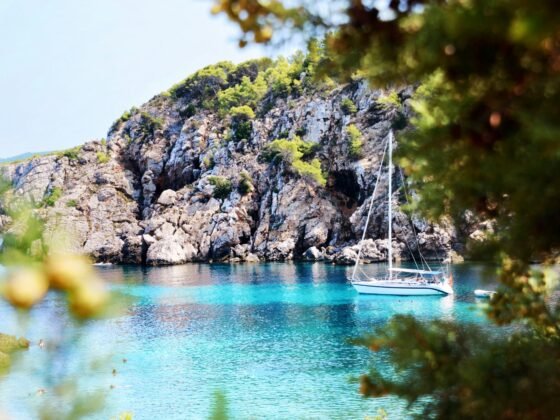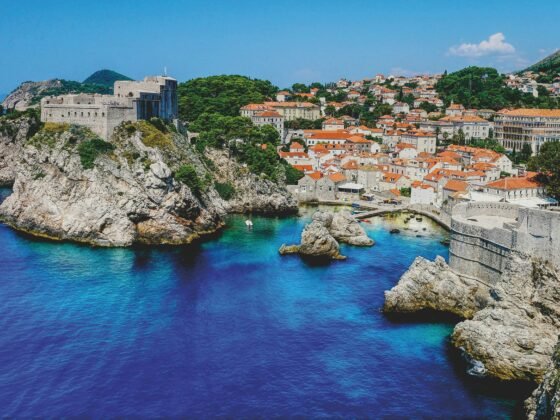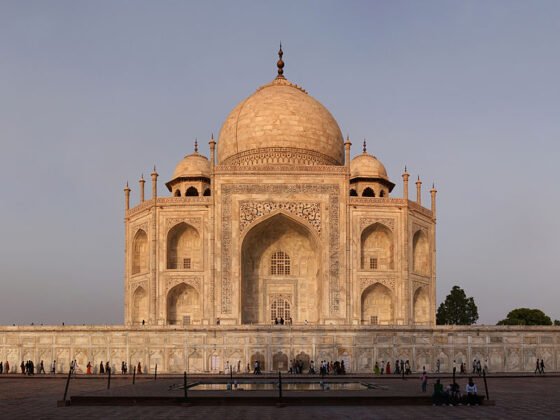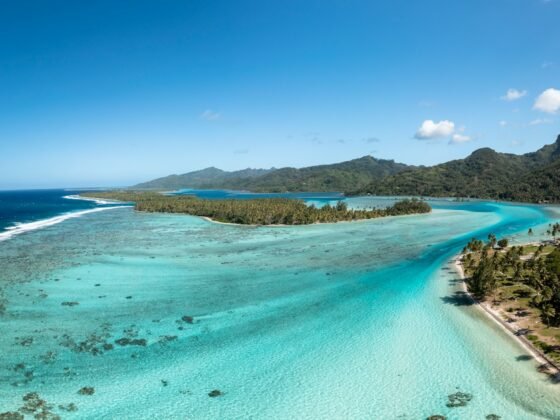Jordan Holidays – Tours & Adventure Travel Guide
PureTravel Says
“Jordan is an Arab country in south west Asia. It borders Syria, Iraq, Israel, Saudi Arabia and the West Bank. It shares control of the Dead Sea and the Gulf of Aqaba. Much of the country is desert, with a fertile area along the banks of the Jordan River. It has a constitutional monarchy and the king rules through the Prime Minister and the cabinet. The capital city is Amman, and the currency is the Jordanian Dinar. The national language is Arabic, but English is widely used in commerce and government.
Tourism is an important part of Jordan’s economy. Visitors to Jordan are drawn to see the ancient city of Petra, the desert castles, National Reserves and the Dead Sea. The highest point in Jordan is Jabal Ram, which is 1,734m (5,689 feet) above sea level, and the Dead Sea is the lowest point. It is 420m (1,378 feet) below sea level.”
-----------------------------------------------------------
Culture
Jordan has been the home of many ancient civilizations including the Sumerian, Akkadian, Babylonian, Assyrian, Mesopotamian and Persian empires. Each of these has left its own rich history. The area is considered to be part of the “Cradle of Civilization”.
The Arabic script was invented by the Nabataeans, who also founded the city of Petra. Due to its position on many trade routes, Petra was a prosperous city for many hundreds of years.
Jordan’s culture and history are captured in its language, faith and values. The cuisine is influenced by Turkish, Egyptian and Indian cultures and is delicious. Lamb, chicken, beef and camel meats are eaten, and other poultry. Herbs and spices, particularly mint and thyme are used for flavoring. Meze is an assortment of small and tasty dishes, which is typical Jordanian cuisine. Hospitality is part of the Arabic culture, with large family meals and formal dinners.
Art is well-practiced and plentiful. There are many professional artists, and exhibitions are often held here. There is a prestigious art center in Amman.
-----------------------------------------------------------
When to Go
winter temperatures drop to freezing. From November to March the western part of the country receives more rain, and the higher areas see snowfall.
The capital city of Amman varies from 39-90F (4-32C) with some rainfall between November and March. Spring and autumn are the best months for this area of Jordan.
The Dead Sea is an ideal holiday resort as it has 330 days of sunshine per year, and the low altitude makes the sunlight weaker. Temperatures range from 86F (30C) in the spring to 104F (40C) in the summer.
-----------------------------------------------------------
Jordan Holidays In Focus
-----------------------------------------------------------
Adventure & Activities
Walking and Hiking - Can be done in the National Parks, and around the various cities.
Horseback Riding and Camel Rides - Offered by some companies who arrange tours to Petra. As there is no vehicular access through the narrow twisting Siq, these are a good method of transport here.
Rock climbing - Available up the walls of the Wadi Rum.
Water Sports - Available at Aqaba. Most hotels and resorts have good beach facilities and plenty of water sports equipment is available for hire.
-----------------------------------------------------------
Nature Reserves
The Azraq Wetland Reserve - Has a series of pools and marches which attract a large variety of birds, particularly during their migration from Asia to Africa. Some species spend the winter in the Reserve, or breed in the wetlands. The reserve is managed by the Royal Society for the Conservation of nature. Some of the pools are natural, while others are man-made. The marshlands flood seasonally with the rains. The large mudflats are called Qa’a Al-Azraq.
Mujib Nature Reserve - Near the east coast of the Dead Sea. The year-round water flow from several rivers makes this an excellent place for many permanent and migratory birds. It is the lowest Nature Reserve in the world running from the Kerak and Madaba mountains down to the Wadi Mujib Gorge and the Dead Sea. The remote landscape is home to a number or rare species of wild cats, goats and other mountain animals. The horned Ibex lives in the sandstone cliffs around Mujib.
Dana Nature Reserve - An area of outstanding natural beauty. It includes a variety of landscapes, from wooded highland area to sand dunes and gravel plains. There are 600 species of plants, including many rare species. There are 37 species of mammals and 190 species of birds for wildlife enthusiasts.
The beautiful Rummana Mountain, the archeological ruins of Feinan, the remote Dana Village and the red and white sandstone cliffs of Wadi Dana all make this a rewarding area to explore.
The Shawmari Wildlife Reserve - Created in 1975 as a breeding center for endangered wildlife. It covers a mere 22 km2 but is a successful and thriving Park providing protection for many rare species. By protecting the habitat and preventing hunting, the oryx, ostriches, gazelles and onagers are once again increasing in number.
Bird watching can also be very rewarding in several of the National Parks.
-----------------------------------------------------------
Petra Ancient Sightseeing
Petra is a remote and ancient city carved out of the side of Mount Hor. The pink rock makes the buildings even more uniquely beautiful. The city is hidden and can only be accessed through a narrow gorge called the Siq, which is 1.25km (0.8 mile) long. Due to its secluded position in a mountain basin, it was only rediscovered in 1812 by Swiss explorer Johann Ludwig Burckhardt.
Most of the ancient structures are carved into the rock. One of the most beautiful and well-known is the Treasury. Such is its significance, it has been designated as one of the “New Seven Wonders of the World” by the New Open World Corporation and it is a UNESCO World Heritage Site. There is also the Monastery, the Roman theatre, the Royal Tombs and the High Place of Sacrifice.
Umm Qais is a town located on the ancient site of the ruined city of Gadara. It is on a promontory with magnificent views over the Yarmouk Valley, Lake Tiberias and the Golan Heights. It flourished in Roman times under Augustus and was home to many writers, artists and poets. It dates back possibly to the 7th century BC. There are still many sights to be enjoyed here including the remains of the Roman theatre, and there is a local museum with many relics. There are also the remains of a beautiful colonnaded street, a black basalt theatre, a church and a bath complex.
Al-Rabad Castle is an Islamic castle at Ajlun, in northern Jordan. It is a huge fortress built in 1184-1185AD to protect the country from the attacks of the Crusaders. Large parts of the castle still remain in tact and can be walked around and enjoyed. It has some excellent views of the surrounding landscape.
Shobak Castle is another relic of the Crusades. It is a short journey north of Petra. The castle has an impressive location, perched on the side of a mountain. It was well fortified with a huge gate and three walls encircling it. Unfortunately, despite its defenses it fell to Saladin just 75 years after it was built. Ancient inscriptions of later successors can be seen on the castle walls. It was once called ‘Krak de Montreal’ or ‘Mont Royal’ in honor of the king’s contribution to the construction. Near the gatehouse there is a spiral staircase leading down to a spring.
Jerash is considered one of the best preserved Roman cities. It was formally named Gerasa, and was built by the soldiers of Alexander the Great in the 4th century BC.
Jerash is famous for its ancient Roman architecture in ‘Oriental baroque’ style. The other buildings of note include Roman theatres, colonnaded streets, a triumphal arch, fountains, baths and the Oval Plaza. The most impressive monument is the Temple of Artemis, patron goddess of Jerash, which still dominates the town. During July and August there is a three-week Jerash Festival which celebrates with dance, music and drama in the ancient open-air venues.
Amman is the capital of Jordan and civilization can be traced back to 8500 BC here. It is also known for its Roman theatre and Museums. The Dead Sea Scrolls can be seen in the museum here. It is a city of contrasts with its modern architecture and communications.
About one and a half hours away is Umm al-Jimal, the ‘Black Gem of the Desert’. It is a rural town with old black basalt mansions and towers, some of which were three storeys high, and are still standing.
Al-Karak Castle dates back to the times of Salah-al-Din in the 12th century. It is at an elevation of 930m (3,051 feet) and overlooks the Dead Sea and the West Bank. Karak city is 140km south of Amman, on the king’s highway. It was built as an ancient Crusader stronghold with valleys on three sides.
It is still possible to see the fighting gallery overlooking the approach to the castle, and the huge arched halls on the north wall which were the living quarters and stables. The strong walls are strengthened with rectangular projecting towers, and the vaulted galleries are lit only by narrow slits.
Karak Archeological Museum has detailed exhibits of local history and archeology.
Madaba is worth visiting to see its mosaics; the Madaba Map; Mount Nebo from where Moses was said to view the Promised Land, and the River Jordan.
The Byzantine and Umayyad mosaics are very beautiful. The Madaba Mosaic Map is an index map of the region and is preserved in the floor of the Greek Orthodox Basilica of Saint George. It has two million tiles of colored stone, and shows the hills, valleys, villages and towns of the 6th century, and the Nile Delta. The mosaic map of Jerusalem also dates back to the 6th century and is labeled the ‘Holy City’. The first mosaics were discovered by chance during the construction of new buildings.
Qasir Amra, (Quseir Amra) is one of Jordan’s best preserved sights and is a UNESCO World Heritage Site. The interior walls and ceilings have well-preserved frescoes and two rooms have beautiful colored mosaic floors. The reception hall and hammam are both decorated with figurative murals. It was built in the 8th century as a fortress with a garrison and a residence of the Umayyad caliphs.
-----------------------------------------------------------
Other Places of Interest
The Dead Sea attracts many visitors. It is the lowest point on earth at 402m below sea level, and it continues to drop by one meter a year. It is popular resort for day trips and longer stays. The public beaches charge a small fee, and many hotels offer day passes that include the full use of the resort facilities.
The water of the Dead Sea is very salty, and is too salty even for marine inhabitation. It has very little rainfall and has a high rate of evaporation so it is actually shrinking. It is an ideal holiday resort as it has 330 days of sunshine per year, and the low altitude makes the sunlight weaker. Temperatures range from 86F (30C) in the spring to 104F (40C) in the summer.
Aqaba is a popular resort on the shores of the Gulf of Aqaba. It has numerous shopping centers, hotels and water sports.
Wadi Rum is a mountainous desert region. It is a popular destination for rock climbing and other activities.
-----------------------------------------------------------


